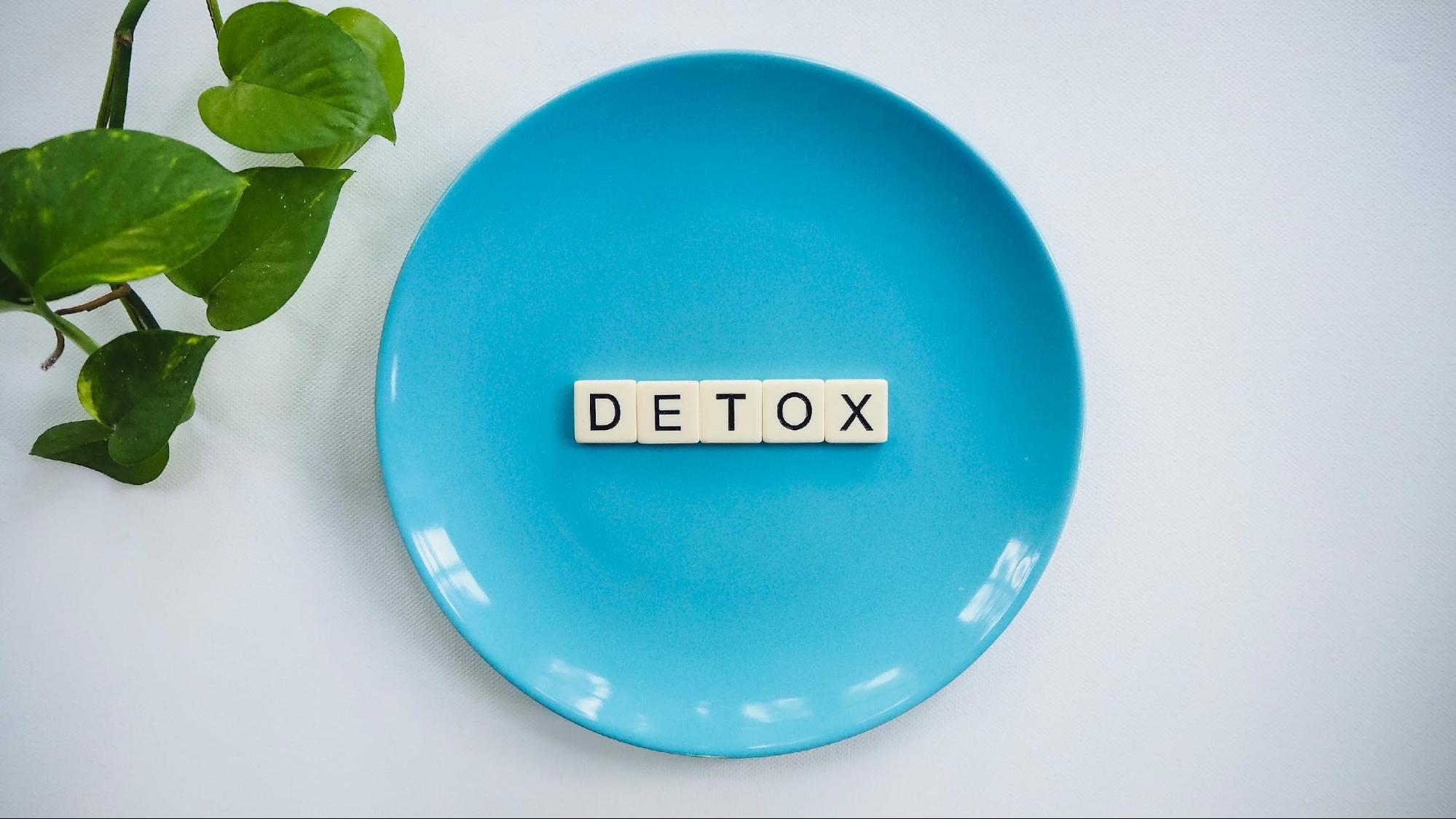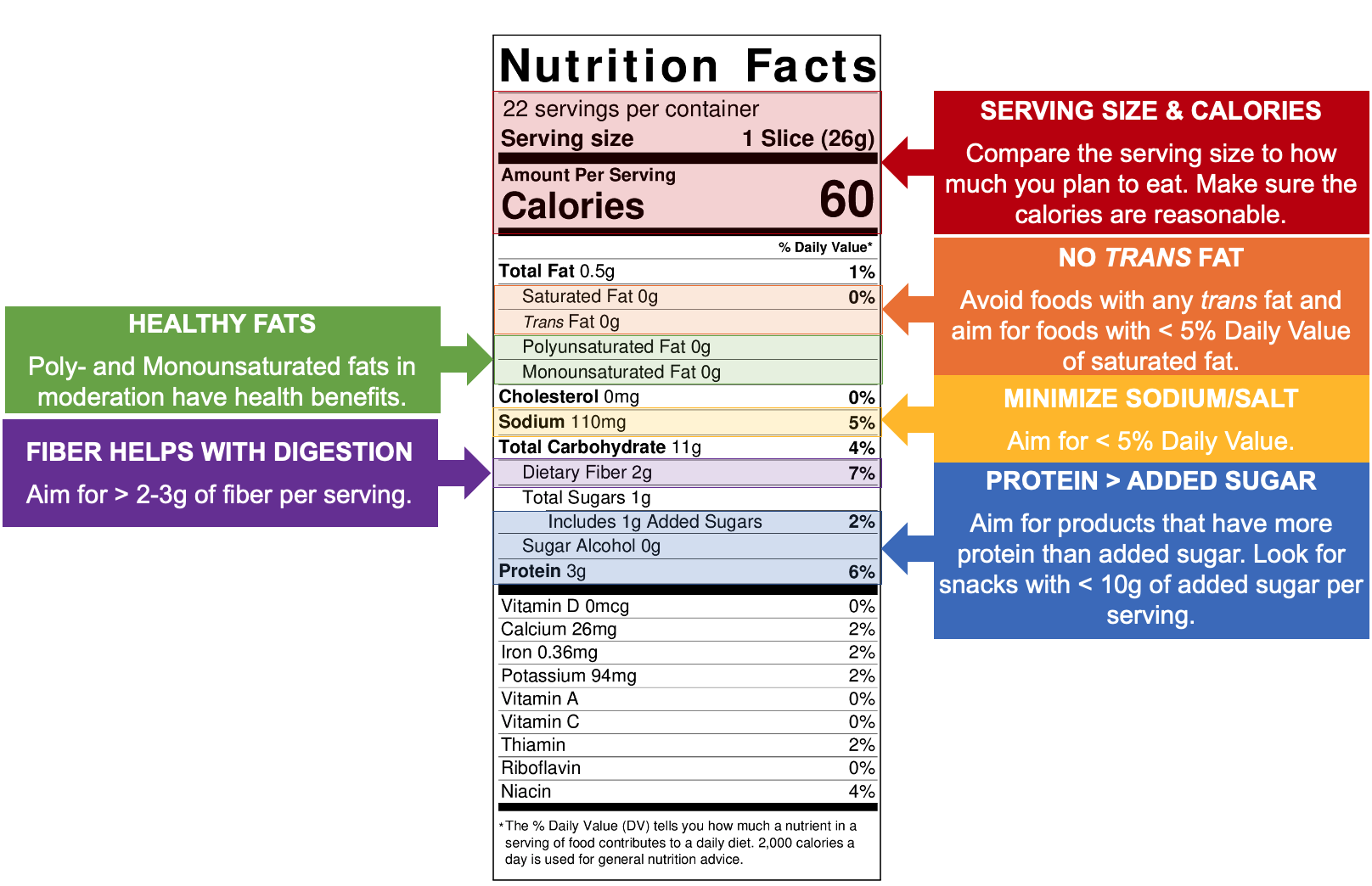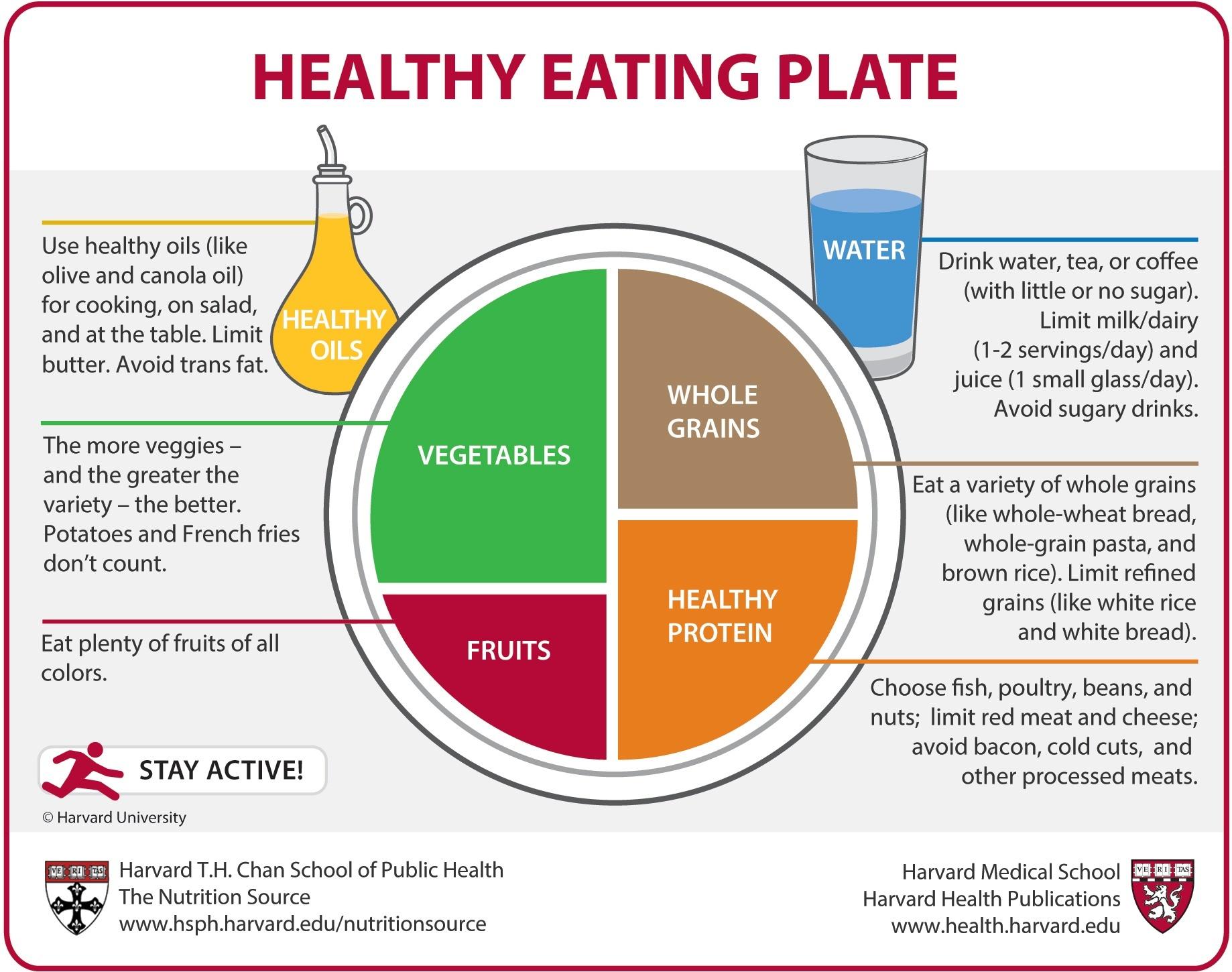A healthy diet and weight have many benefits for patients with lupus by reducing:
- Depressive symptoms
- Sleep problems
- Fatigue
- Pain
- Declines in brain function and memory loss
Here are some general healthy diet guidelines:
Incorporate these foods into your diet as much as possible:
- Fruits
- Vegetables
- Whole Grains (e.g., brown rice, oatmeal)
- Nuts
- Seeds
- Seafood
- Legumes (e.g., black beans, garbanzo beans, and lentils)
- Foods rich in omega-3 fatty acids (wild caught fish, grass fed meat, walnuts, chia seeds)
- Starches found in plantains, beans, peas and lentils, whole grains, cooked and cooled rice may promote happy gut bacteria.
Check the ingredients in your food and reduce or avoid:
- Salt
- Red or processed meat (e.g., bacon and luncheon meat)
- Foods that include added sugars are pro-inflammatory (e.g., sucrose, maltose, cane syrup, molasses, cane sugar, corn sweetener, raw sugar, syrup, honey, or fruit juice concentrates)
- Coconut oil and animal fats like butter
- Added chemicals in foods
- Alfalfa sprouts
In general, if the food makes you feel bad, avoid it!








Calculate Your Recommended Caloric Intake
Back to topBasal metabolic rate (BMR) refers the rate your body uses energy while at rest to keep the vital functions going. These vital functions include breathing, maintaining body temperature, supplying nutrients to your organs, and many more. Basal metabolic rate is impacted by your sex, height, weight, and age. Basal metabolic rate does not include the energy required to digest food or the energy used when working out or moving around.
Typically, males will have a higher BMR than females. BMR also decreases with age and increases with weight and height. Adding your BMR to the number of calories you burn daily can allow you to determine how many calories you should take in daily to meet your weight goals. For example, if you have a BMR of 2,000 calories/day and burn about 350 calories/day, that’s a total of 2,350 calories/day. To lose weight, you should eat fewer calories than that, and to gain weight, you should eat more calories.
Use the table below to calculate you BMR:
Your calculated BMR is:
How Can I Afford a Healthy Diet?
Back to topMany people have a hard time paying for enough food to feed themselves and their families. Do you need assistance having enough money to buy groceries and add high quality food such as vegetables, fruits, nuts, and fish? Review the following resources below that can increase your access to healthy foods and help you save money at the grocery store.
Resources for Healthy Eating on a Budget:
- The Supplemental Nutrition Assistance Program (SNAP): This program provides food assistance to eligible low-income individuals and families via an electronic benefits card. To apply, contact the DHS in the state in which you currently live. To learn more about eligibility related to resource and income limits, click here.
- The Women, Infants and Children Program (WIC): Provides supplemental nutrition support for low-income pregnant, breastfeeding, non-breastfeeding postpartum women, infants, and children up to five years of age who are at nutritional risk. To determine if you are eligible and to apply for benefits visit - https://www.fns.usda.gov/wic.
- Feeding America: This organization has a mobile food pantry program that can be accessed by anyone. With this program, a truckload of food is distributed to clients in pre-packed boxes or through a farmers’ market-style distribution where clients choose to take what they need. Not all Feeding America food banks operate the Mobile Pantry program; contact your local food bank here and find out what it is doing in your community.
- The United Way: This program is dependent on the county but offers assistance with locating neighborhood food pantries. Learn more here.
- Meals on Wheels: Some Meals on Wheels programs have restrictions based on age, income, or homebound status. Click here to find a Meals on Wheels provider near you.
- Needymeds.org: This website provides a national database of low-cost medical, dental, and vision clinics as well as transportation services by state. Needymeds.org also provides applications for free or discounted medication through the respective pharmaceutical companies.
- 211 Helpline Center: 211 works a bit like 911. Calls to 211 are routed by the local telephone company to a local or regional calling center. The 211 center’s referral specialists match the callers’ needs to available resources and refer them directly to an agency or organization that can help. 211 covers all 50 states, the District of Columbia, and Puerto Rico. Referrals offered by 211 include basic human needs (food pantries, rental assistance, etc.), physical/mental health (health insurance, Medicaid, Medicare, etc.), work support (financial assistance, job training, etc.), and several others. To find out whether 211 services are offered in your area and to obtain more information, visit 211.org.
How to Save Money at the Grocery Store:
- Ask about discounts. Ask your local grocery stores if they have a senior discount or a loyalty or discount card. Besides getting items at a lower price, you may also get store coupons.
- Use coupons when you can. Coupons are only helpful if they are for items you need. Also, at times other brands will cost less than using a coupon.
- Consider store brands because they usually cost less. These products are made under a special label, sometimes with the store name. You might have to look on shelves that are higher or lower than eye level to find them.
- Be aware that convenience costs more. You can often save money if you are willing to do a little work. For example, buy whole chickens and cut them into parts, shred or grate your own cheese, and avoid instant rice or instant oatmeal. Bagged salad mixes cost more and may spoil before a head of lettuce.
- Look at unit prices. Those small stickers on the shelves tell you the price but also the unit price – how much the item costs per ounce or per pound. Compare unit prices to see which brand is the best value.
- Try to buy in bulk, but only buy a size you can use before it goes bad. If you buy meat in bulk, decide what you need to use that day and freeze the rest in portion-sized packages right away.
- Focus on economical fruits and vegetables like bananas, apples, oranges, cabbage, sweet potatoes, dark-green leafy vegetables, green peppers, and regular carrots. Frozen fruits and vegetables have the same nutritional content as fresh foods and are often cheaper. Another option is canned fruits and vegetables—however, avoid canned foods with added salt or sugars.
- Think about the foods you throw away. For less waste, buy or cook only what you need.
Resist temptations at the check-out. Those snack foods and candy are put there for impulse buying. Save money and avoid empty calories!
Understand and Use the Nutrition Facts Label
Back to topThe first step to eating nutritious foods is being able to tell if a food is good or bad for your health. The easiest way to do this is by reading the nutrition labels on food items. Important things to look for when reading food labels are serving size, calories, nutrients, and daily value percentages.
Review the figure below to get started.

Calories are important when reading a food label, as they tell you how much energy that specific food or drink will give you. Generally, it’s recommended that people consume 2,000 calories per day, but this value varies from person to person depending on your age, gender, and activity level. It is important to consume the correct number of calories for your body, as there are health consequences for consuming too few or too many calories. When looking at calories, remember that the number of calories represents how many calories are in one serving, so if you are eating two servings you are consuming double the number of calories.
Nutrients on the label generally include carbohydrates, proteins, fats, sodium, cholesterol, vitamins, and minerals. When choosing what foods to eat, you should look for foods with more of the nutrients that are healthy and less of the nutrients that you want to limit. Sodium, added sugars, saturated fat, and trans-fat are all nutrients that may contribute to adverse health effects, so these should be limited whenever possible. On the other hand, nutrients to get more of include fiber, vitamins, and minerals. These nutrients are known to improve overall health and may help prevent certain health conditions, like osteoporosis and anemia, making them an important part of eating a healthy diet.
Daily value percentages (%DV): Most nutrients on food labels will have a percentage next to them, telling you what percent of the recommended daily amount of that nutrient is contained in one serving of the food or drink. This is helpful in determining whether there is a high or low amount of each nutrient in one serving. The general rule for a food or drink being low in a nutrient is a daily value less than 5%, and the rule for a food or drink being high in a nutrient is a daily value above 20%.
Serving sizes refer to the amount of food or drink that people typically consume. All nutrients included on the label are measured by how much is in one serving. To know how much of these nutrients you are getting, you should compare how much of the food or drink you consumed to the serving size. For example, if you eat two servings of a food, then you are getting double the nutrients on the food label.
The figure below shows you how to use your hand to calculate serving sizes.

Filling Your Plate with a Healthy Diet
Back to topBased on many years of studies the United States Department of Agriculture (USDA) has defined what makes up a healthy diet.
How to Fill Your Plate with A Healthy Diet
| Food Group | How Much Per Meal |
|---|---|
| Fruits and vegetables | 50% of every meal |
| Whole grains | 25% of every meal |
| Legumes & animal proteins | 25% of every meal |
| Water | Primary beverage |
| Nuts | Small handful daily |
| Oils/fats | Use healthy oils like olive oil for cooking and do not eat trans fat |
| Salt | 2,500 mg daily (1 teaspoon) |

Here are some general healthy diet guidelines:
Incorporate these foods into your diet as much as possible:
- Fruits
- Vegetables
- Whole Grains (e.g., brown rice, oatmeal)
- Nuts
- Seeds
- Seafood
- Legumes (e.g., black beans, garbanzo beans, and lentils) Healthy oils and fats from vegetables and fish (e.g., olive oil, omega-3 fatty acids)
Check the ingredients in your food and reduce or avoid:
- Salt
- Red or processed meat (e.g., bacon and luncheon meat)
- Foods that include added sugars (e.g., sucrose, maltose, cane syrup, molasses, cane sugar, corn sweetener, raw sugar, syrup, honey, or fruit juice concentrates)
- Coconut oil and animal fats like butter
What about Special Diets and Allergies?
Back to top-
Do I need to eat a special diet such as ketogenic, Mediterranean, or Paleolithic to have a healthy diet? Focus first on eating a healthy and balanced diet. Studies have shown that people can eat a variety of diets and be healthy. There is no single diet recommended for managing lupus symptoms.
-
What about food allergies and intolerances to foods such as dairy or gluten and their impact on chronic pain? Some people may have unique or allergic reactions to certain foods and nutrients. If you choose to cut foods out of your diet, just make sure you are also eating a wide variety of healthy foods.
-
What about anti-inflammatory diets? A healthy diet with a wide variety of foods will help your body make anti-inflammatory chemicals. Your diet will be naturally anti-inflammatory if you eat:
- Berries (fresh or frozen)
- Vegetables like kale or broccoli (fresh or frozen)
- Whole grains without added sugars or sweeteners
- Foods rich in healthy fats like nuts, seeds, and salmon or other fatty fish
-
Do I need to avoid nightshades? There is no data to suggest that all patients with lupus should avoid mushrooms or tomatoes. A good general rule of thumb is if a food makes you feel bad, don’t eat it.
-
What about “leaky gut” in lupus? The role of probiotics is unclear and more data is needed before we understand what role the gut may have in lupus.
-
Should I take supplements?
Good to consider:
Data supports use of certain vitamins and minerals:
Vitamin D. Vitamin D is involved in many functions in the body, but plays an important role in bone health and is associated with reduced inflammation in people with lupus. Many people with lupus have low levels of vitamin D, so talk to your doctor about if your level should be checked or if you should take a vitamin D supplement. The amount of vitamin D you should take depends on your diet and your kidney function.
Calcium. Calcium helps to promote strong bones to prevent fractures. Steroids are a common treatment for lupus, but one side effect is an increased risk of bone fractures from osteoporosis (or fragile bones). If you take steroids, or have taken steroids in the past, you should talk to your doctor about your bone health. Calcium supplementation may be an important part of your bone health plan if you are not able to take enough calcium in through your diet.
May be helpful:
Some studies show benefit for using these supplements, others show no difference:
Omega-3. Supplementation with Omega-3 is associated with reduced inflammation, disease activity, and oxidative stress in people with lupus. Doses used in studies showing benefit were omega-3 (2.25g EPA/2.25g DHA) per day.
Turmeric. Use of turmeric has been shown to lower blood pressure, reduce fatigue and in some studies has an effect on kidney health. The dose studied used a dose of turmeric (active ingredient curcuma) 500mg three times daily with meals.
Avoid:
Don’t take “immune boosters.” You should avoid special compounds advertised to increase energy, strengthen your immune system, or promote weight loss. Most of these claims are not backed by evidence because the FDA does not regulate their development or effectiveness. Many supplements also contain other ingredients which may cause an allergic reaction or trigger a flare.
Specific herbs and supplements to avoid:
- Echinacea herbal supplements are thought to boost the immune system. The immune system is already overactive in someone with lupus, so this supplement may cause a flare and should be avoided.
- Alfalfa and mung bean sprouts are also thought to boost the immune system and should be avoided. They contain a compound called L-canavanine which is associated with causing lupus flares
Steroids and Diet
Back to topSteroids (prednisone or methylprednisolone) are commonly used to treat lupus. Steroids may be associated with side effects such as:
- Weight gain
- High blood sugar, which may lead to diabetes
- High blood pressure
- High cholesterol
- Osteoporosis (fragile bones) and fractures
Changing your diet may help to reduce your risk of developing these problems.
- Reduce your risk of weight gain from steroids. One way steroids cause weight gain is by increasing your appetite and making you crave carbohydrates. One strategy to reduce the weight gain from steroids is to minimize the number of foods you keep at home that are full of simple carbohydrates (such as chips, crackers, cookies or candy). Instead, keep a supply of prepared fresh veggies to snack on when your hunger strikes.
A Video on the Benefits of Eating a Nutritious Diet
Back to topFurther Reading and Other Resources
Back to topHealthy Recipe Resources:
-
Harvard University Nutrition Source: Recipes
-
OldWays: Traditional Diets: Recipes
-
American Institute for Cancer Research: Recipes
Resources if Your Goals Include Weight Loss:
-
Weight loss tips from the National Heart, Lung, and Blood Institute
-
American Institute for Cancer Research: Weight Loss Tips and Myths
-
Centers For Disease Control (CDC): Resources for Losing and Maintaining Weight
Mobile Food Tracker Apps:
There are several apps available for iPhone and Android that can support your nutrition and caloric goals. Many can be downloaded for free or a small fee. Some examples include:
Other Resources:
-
American Academy of Family Physicians Patient Information Resource
-
Americans in Motion – Healthy Interventions
-
Centers for Disease Control and Prevention, Division of Nutrition, Physical Activity, and Obesity
-
Harvard University Nutrition Source
-
U.S. Department of Agriculture, Choose My Plate
References:
- Grimstvedt ME, Woolf K, Milliron BJ, Manore MM. Lower Healthy Eating Index-2005 dietary quality scores in older women with rheumatoid arthritis v. healthy controls. Public Health Nutr. 2010;13(8):1170-1177.
- Berube LT, Kiely M, Yazici Y, Woolf K. Diet quality of individuals with rheumatoid arthritis using the Healthy Eating Index (HEI)-2010. Nutr Health. 2017;23(1):17-24.
- Barebring L, Winkvist A, Gjertsson I, Lindqvist HM. Poor Dietary Quality Is Associated with Increased Inflammation in Swedish Patients with Rheumatoid Arthritis. Nutrients. 2018;10(10).
- Fitzgerald KC, Tyry T, Salter A, et al. Diet quality is associated with disability and symptom severity in multiple sclerosis. Neurology. 2018;90(1):e1-e11.
- Perry MC, Straker LM, Oddy WH, O'Sullivan PB, Smith AJ. Spinal pain and nutrition in adolescents–an exploratory cross-sectional study. BMC Musculoskelet Disord. 2010;11:138.
- O'Loughlin I, Newton-John TRO. 'Dis-comfort eating': An investigation into the use of food as a coping strategy for the management of chronic pain. Appetite. 2019;140:288-297.
- Freidin MB, Stalteri MA, Wells PM, Lachance G, Baleanu AF, Bowyer RCE, Kurilshikov A, Zhernakova A, Steves CJ, Williams FMK. An association between chronic widespread pain and the gut microbiome. Rheumatology (Oxford). 2021 Aug 2;60(8):3727-3737.
- Arriens C, Hynan LS, Lerman RH, Karp DR, Mohan C. Placebo-controlled randomized clinical trial of fish oil's impact on fatigue, quality of life, and disease activity in Systemic Lupus Erythematosus. Nutr J. 2015 Aug 18;14:82.
- Khajehdehi P, Zanjaninejad B, Aflaki E, Nazarinia M, Azad F, Malekmakan L, Dehghanzadeh GR. Oral supplementation of turmeric decreases proteinuria, hematuria, and systolic blood pressure in patients suffering from relapsing or refractory lupus nephritis: a randomized and placebo-controlled study. J Ren Nutr. 2012 Jan;22(1):50-7.




